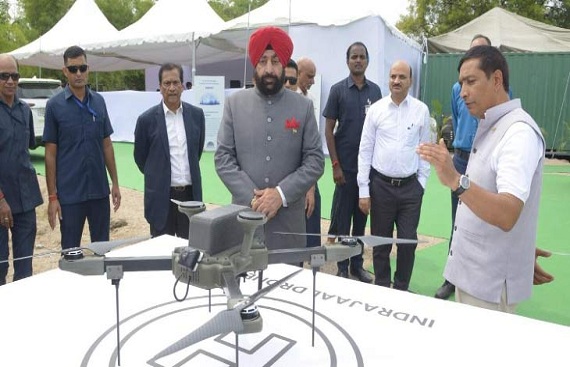Grene Robotics Unveils India's First AI-Driven Advanced Autonomous Anti-Drone System
By
siliconindia | Thursday, 07 September 2023, 03:01 Hrs

Grene Robotics, a Hyderabad-based robotics company, has introduced an advanced autonomous anti-drone system, called Indrajaal, powered by artificial intelligence (AI). “We will never forget the June 27, 2021 drone attack on the Jammu airport and the June 15 Galwan attack. At that time, we wondered what solution we had against drones and swarms. Today, Indrajaal has given us the answer and shown that it is possible.”
Indrajaal is touted as the world’s only wide-area Counter-Unmanned Aircraft System (C-UAS) and can protect large areas, including entire cities, from various types of drones. It provides comprehensive security against moving threats, which static defense systems cannot handle effectively. “From low radar cross section (RCS) threats to medium and high-altitude long endurance (MALE and HALE) UAVs, loitering munitions, smart bombs, rocket showers, nano and micro drones, swarm drones, and more, we have it all covered,” said Wing Commander Sai Mallela, co-founder of Grene Robotics. He had earlier helped develop the Integrated Air Command and Control System for the Indian Air Force, to adopt network-based operations, and also helped orchestrate a multi-million dollar import substitution for the forces.
The system can detect, identify, classify, track, and neutralize drone threats in real-time, offering 360-degree protection. It is designed to defend against all classes and levels of autonomous drones over an area of 4,000 square kilometers. Indrajaal is considered a crucial solution for addressing the increasing threat of hostile UAV activity in India, and it is expected to have applications in defense, public infrastructure protection, and private sectors.
Mr Raju says that in the near future, we will see a lot of drone activity, and 95% of them will be friendly drones rather than threats. “Indrajaal can identify friendly drones from foes.” On the cost, Mr Raju says, “If I am building the Telangana secretariat for 200-300 crore, this system would cost about 5 crore. This is a typical capital infrastructure cost to protect what you are building. For example, level 4 data centres have fire protection, and they also need drone protection as part of their capital infrastructure.”
Wing Commander Sai Mallela explains that current deployments have limitations, as stand-alone systems are not scalable or practical. “Only radar-based detections are inaccurate at low radar cross section (RCS) and close to the ground. They are even incapable of identifying the operating radio frequency.” The system’s cost is comparable to other capital infrastructure costs for protecting critical assets. The founders of Grene Robotics believe that as drone activity continues to rise, Indrajaal will play a vital role in safeguarding national security. The system can distinguish between friendly and hostile drones, making it a valuable tool for managing the increasing number of drones in the airspace.

